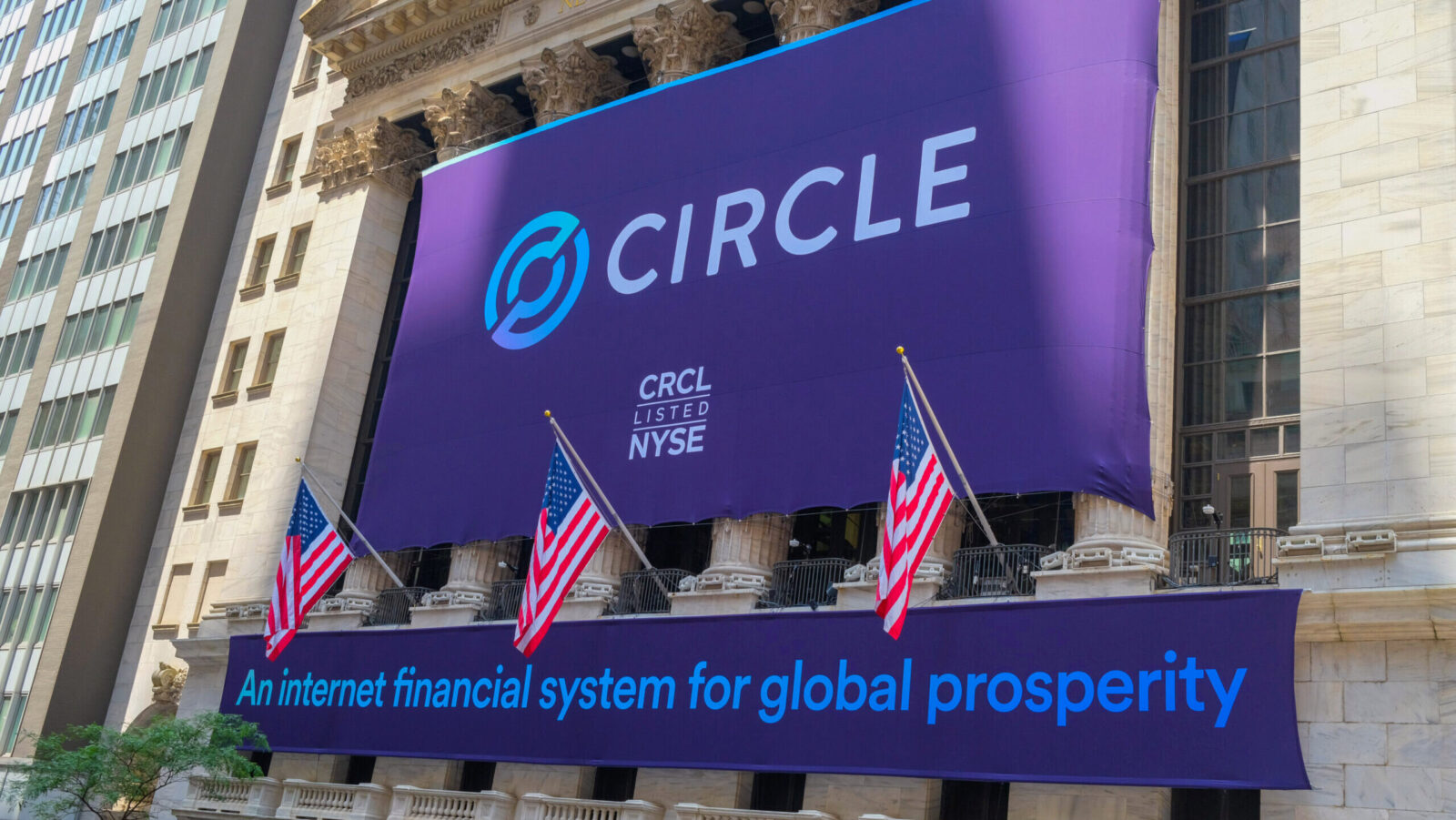Good morning.
Inflation held steady at a 2.7% annualized rate in July, the Labor Department said Tuesday. The identical reading to June came in 0.1% less than expected by economists, helped by lower gas and energy prices. Core inflation, which strips out volatile food and energy prices and is the Federal Reserve’s preferred inflation gauge, rose 3.1%, up from 2.9% a month earlier and topping 3% for the first time in six months.
There were also modest signs that companies have begun to pass on the cost of tariffs to consumers: July saw a monthly 0.7% increase in household furnishings and supplies and a 0.1% jump in apparel prices. Goldman Sachs economists predict this will change very quickly, however, with consumers set to bear 67% of tariff costs by October, skyrocketing from 22% in June. President Donald Trump expressed fury at the bank’s analysis Tuesday, posting on social media that Goldman CEO David Solomon — who stepped away from his hobbyist electronic dance music career two years ago — “ought to just focus on being a DJ.” What everyone wants to know is: What’s on DJ Jerome Powell’s September playlist?
How Stablecoins Are Squaring the Circle a Month After GENIUS Act’s Passage

Circle rounded out its first quarter as a publicly traded company with a $482 million loss, but its shares were still 50% higher yesterday than their hyped June debut as investors bank on a bull market for stablecoins.
The crypto company mainly makes revenue, which rose 53%, from returns on reserves of the stablecoin it issues, USD Coin. USDC is the second-largest stablecoin by market cap behind Tether, whose issuing company has remained private. USDC commands 29% of the dollar-backed stablecoin market compared with Tether’s 67%, per CryptoQuant.
USDC’s circulation has expanded 90% over the past year as the company looks to lead the broader financial sector’s foray into stablecoins and crypto.
One Month-iversary
Next Monday will mark one month since President Trump signed the GENIUS Act, landmark legislation that establishes a framework for how companies issue stablecoins, but it’s more like the anniversary of a situationship than a marriage. The legislation will take months, if not years, to go into effect as banking regulators hash out its fine points.
Still, companies are starting to rev their engines at the regulatory red light ahead of them, prepping to hit the gas when it turns green:
- Walmart and Amazon are exploring how to create stablecoins that customers could use to purchase goods on their sites, The Wall Street Journal reported in June. The CEOs of Bank of America and Citigroup said on their financial institutions’ respective earnings calls last month that they’re weighing whether they should make stablecoins of their own.
- Fiserv — whose network processes billions of transactions for thousands of financial institutions and millions of merchants — said in June that it’ll team up with Circle to launch a FIUSD stablecoin. It’s not just Fiserv looking to team up with Circle rather than take on the stablecoin market solo, according to Circle’s CEO, who told CNBC yesterday that the number of financial institutions in talks with the company has surged since its IPO and the passage of the GENIUS Act.
Not Happening Overnight: Stablecoins are seen as a lower-risk entry point into crypto because their value is tied to another asset, usually the US dollar. The coins could let retailers accept crypto payments without taking on the risk of more volatile currencies like memecoins and let banks process cross-border payments faster and more cheaply than traditional transactions. Still, it could be difficult to navigate new rules, especially while they’re still in flux. Experts say banks may need extra cash on hand in order to hold stablecoins, while non-financial companies may be set back by new compliance costs they’re not used to dealing with, such as customer verification.
How Fast Do You Spring Out Of Bed On Monday Morning?

There’s an endless parade of cookie cutter wisdom out there about career advancement, “purpose,” and achieving work-life success.
Most of it is not worth the paper it’s written on.
This new guide from Oracle NetSuite offers a smart, actionable way to get ahead in your career, build high-energy teams that thrive even when you’re not there, and enjoy the ride (because if not, what’s the point?).
With a free download you’ll get easy-to-implement ideas like:
- “Burning your boats”: a tool to help you create a plan, then stick to it at all costs.
- Defining your leadership energy, because not all are created equal.
- Framing work processes as either “win or learn,” each being a fine outcome.
Give it a read, and you’ll love how that Monday morning feeling changes entirely.
Is There Life After AI for Big Software?
It’s not quite code-blooded murder, but shares of software companies have been beaten to a bloody pulp.
Companies in the sector on both sides of the Atlantic were greeted with steep selloffs to begin the week, with one analyst’s downgrade of Adobe — offered with the assessment that “AI is eating software” — escalating jitters about the potential for artificial intelligence to do to Photoshop what Photoshop’s digital tools did to the gouache paint, kneaded erasers, charcoal sticks, and airbrushes once commonly used to make photo alterations.
Rise of the Machine Helpers
The domino effect kicked off Monday, after Melius Research analyst Ben Reitzes downgraded Adobe shares to sell from hold, slashing his target price from $400 to $310 in the process. The company’s shares currently trade at $338.
Reitzes wrote that software companies are at significant risk of losing out as AI becomes increasingly able to perform tasks automatically that humans currently use the firms’ products to do. Real-world examples, he said, include “the rise of [AI interface design firm] Figma, [AI graphic design firm] Canva, and [AI multimedia design firm] Runway and others who are taking market share as they become better capitalized.” He’s not the first to note that AI agents could make traditional software interfaces obsolete. Researchers at Alix Partners earlier this year described what software companies are undergoing as a “big squeeze,” noting they are faced with “nimble, AI-native entrants that can replicate applications at a fraction of the cost” on one side and “tech behemoths … pouring billions into the AI arms race” on the other. This week, investors’ underlying jitters about the whole sector rose to the surface:
- On Monday, Adobe slipped 0.25%, Salesforce, 2.6%; Intuit, 5.5%; and Workday by 3.5%. Tuesday was Europe’s turn, as Germany’s SAP and Nemetschek fell 4% and 11%, respectively, France’s Dassault Systèmes, 2.4%; and the UK’s Sage by 4.7%.
- Despite these fears, Adobe beat earnings expectations in its latest quarter, raised its annual outlook, and has invested in building its own AI platform and offerings. It just hasn’t been enough for investors. Notably, Adobe’s remaining performance obligation (RPO), a key growth metric that tracks expected future revenue based on contracts, was flat at $19.7 billion in Q2, below expectations. Overall, Adobe shares have tumbled 23.9% this year, trailing both the broader S&P 500’s 9.6% gain and the industry-specific iShares Expanded Tech-Software Sector ETF’s advance of 8.3%.
Mind you, it’s not all analyst doom and gloom: Goldman Sachs estimates the integration of Adobe’s generative AI-backed and brightly named Firefly app could add over $4 billion to the company’s addressable market, and sees a bullish 70% upside for Adobe shares in the next year.
Where it Hurts the Most: Under the greatest pressure are mid-sized software companies with fewer resources than Adobe’s $21 billion in annual revenue. Alix Partners analyzed 122 publicly listed enterprise software companies with under $10 billion in revenue and found the number of high-growth companies fell to 39% in 2024 from 57% in 2023. They forecast only 27% will remain that way in 2025. “We believe many mid-size enterprise software companies will face threats to their survival over the next 24 months,” the firm wrote in an April report.
The Tiny Tech Powering An $80 Trillion Future. A breakthrough in AI is accelerating innovation at lightning speed, and one under-the-radar company sits at its core. Backed by praise from Jeff Bezos and Cathie Wood, some say it could rival 35 Amazons. See the full story in this exclusive report.
China Recreates a Shipbuilding Dreadnought
To the extent they ever really were, China’s two major state-owned shipmakers will no longer be ships that pass in the night.
This week, China State Shipbuilding, or CSSC, is set to absorb China Shipbuilding Industry, in a $16 billion merger that will create the world’s largest shipbuilding firm. It’s a move that will likely make a significant geopolitical and economic splash amid a global trade war.
Dropping Anchor
The merger is actually a reunification. The two firms were one and the same before splitting in 1999 when the Chinese government was attempting to inject a little more competition into its domestic sector at a time when Japan ruled the global shipmaking industry. The strategy paid off, with the era of competition pushing the Chinese shipbuilding industry to the top of the global pecking order (we’d call that a point in Adam Smith’s ledger, though a Biden-era US Trade Representative’s Office probe concluded that China used unfair tactics to dominate the sector).
According to the US Navy, China owns roughly 232 times the shipbuilding capacity of the US. Meanwhile, United Nations data shows that China-built ships held about 55% of global shipping tonnage last year, compared with just half a tenth of a percent carried by US-made ships.
Now, Beijing is putting the two pieces back together to make an undisputed shipmaking king, just when the merger’s potential benefits are needed most:
- Combined, the two companies accounted for roughly 17% of the global market last year, according to data from Clarksons Research, and the post-merger company will hold an order book totaling more than 530 vessels and garner annual revenue of about $18 billion.
- Crucially, the combined company will likely streamline the process of shipmaking for the Chinese navy. CSSC is already one of the leading suppliers for the seafaring force, and the company has said the merger will help it fulfill needs for advanced equipment.
Shifting Tides: The merger has been in the works since 2019, but it has taken on renewed urgency this year amid shifting US trade policy. Starting in October, China-built ships will be slapped with port fees of $18 per net ton by US Customs, which will escalate through 2028. Meanwhile, the Shipbuilders’ Association of Japan said in June that the country is intent on growing its market share to about 20% by 2030, up from around 9% today, though well down from the 50% hold it had in its 1990s heyday. And, of course, it’s all set against the backdrop of a new trade war that could shrink global trading networks, not grow them. In other words, the wind isn’t entirely behind the combined Chinese shipbuilding firms’ sails, though we’re guessing they’ll be able to keep moving forward — more or less full steam ahead.
Extra Upside
- Longshot: AI startup Perplexity, which was valued at $18 billion less than a month ago, has made an unsolicited, $34.5 billion bid for Google’s Chrome browser, which the Department of Justice has pressured the company to sell.
- Unwelcome Back: Nvidia struck a deal with the US government to resume selling to China, but Beijing officials are advising Chinese businesses to avoid using the American firm’s processors.
- Hiring Is The Hardest Part Of Scaling A Business. Finding that “A player” who will lift your team to the promised land is a lot easier with the right tools and processes in place. Find out which HR Software you need to scale your core HR functions with a free consultation with SelectSoftware Reviews.*
* Partner

